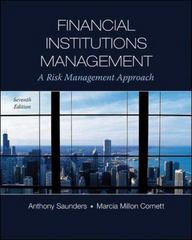Answered step by step
Verified Expert Solution
Question
1 Approved Answer
Standard Deduction Amounts Single If taxable income is: Not over $10,275 Over $10,275 but not over $41,775 Over $41,775 but not over $89,075 Over $89,075


 Standard Deduction Amounts Single If taxable income is: Not over $10,275 Over $10,275 but not over $41,775 Over $41,775 but not over $89,075 Over $89,075 but not over $170,050 Over $170,050 but not over $215,950 Over $215,950 but not over $539,900 The tax is: 10% of taxable income. ... . $1,027.50+12% of the excess over $10,275. ... $4,807.50+22% of the excess over $41,775. .. . $15,213.50+24% of the excess over $89,075. . $34,647.50+32% of the excess over $170,050. .. $49,335.50+35% of the excess over $215,950. . $162,718.00+37% of the excess over $539,900. Married, Filing Joint and Surviving Spouse If taxable income is: Not over $20,550 Over $20,550 but not over $83,550 Over $83,550 but not over $178,150 Over $178,150 but not over $340,100 Over $340,100 but not over $431,900 Over $431,900 but not over $647,850 Over $647,850 The tax is: 10% of taxable income. $2,055.00+12% of the excess over $20,550. $9,615.00+22% of the excess over $83,550. $30,427.00+24% of the excess over $178,150. $69,295.00+32% of the excess over $340,100. $98,671.00+35% of the excess over $431,900. $174,253.50+37% of the excess over $647,850. Head of Household If taxable income is: Not over $14,650 Over $14,650 but not over $55,900 Over $55,900 but not over $89,050 Over $89,050 but not over $170,050 Over $170,050 but not over $215,950 Over $215,950 but not over $539,900 Over $539,900 The tax is: 10% of taxable income. $1,465.00+12% of the excess over $14,650. $6,415.00+22% of the excess over $55,900. $13,708.00+24% of the excess over $89,050. .. $33,148.00+32% of the excess over $170,050. ... $47,836.00+35% of the excess over $215,950. . $161,218.50+37% of the excess over $539,900. Requirement b. Determine Gail's income tax each year from 2022 through 2026, assuming her only income is her $150,000 annual salary, her itemized deductions are $24,000 annually (none of which are charitable contributions), and she has not remarried. Assume also that the tax rate schedules and standard deduction amounts for 2022 also apply in subsequent years. The son was born on April 15, 1998, is not Gail's dependent each year, and lives with Gail for all of each year. (Use the 2022 tax rate schedule for all tax calculations. Do not round intermediary calculations. Only round the amount you enter in the input field to the nearest whole dollar. Enter a "0" for any zero amounts.)
Standard Deduction Amounts Single If taxable income is: Not over $10,275 Over $10,275 but not over $41,775 Over $41,775 but not over $89,075 Over $89,075 but not over $170,050 Over $170,050 but not over $215,950 Over $215,950 but not over $539,900 The tax is: 10% of taxable income. ... . $1,027.50+12% of the excess over $10,275. ... $4,807.50+22% of the excess over $41,775. .. . $15,213.50+24% of the excess over $89,075. . $34,647.50+32% of the excess over $170,050. .. $49,335.50+35% of the excess over $215,950. . $162,718.00+37% of the excess over $539,900. Married, Filing Joint and Surviving Spouse If taxable income is: Not over $20,550 Over $20,550 but not over $83,550 Over $83,550 but not over $178,150 Over $178,150 but not over $340,100 Over $340,100 but not over $431,900 Over $431,900 but not over $647,850 Over $647,850 The tax is: 10% of taxable income. $2,055.00+12% of the excess over $20,550. $9,615.00+22% of the excess over $83,550. $30,427.00+24% of the excess over $178,150. $69,295.00+32% of the excess over $340,100. $98,671.00+35% of the excess over $431,900. $174,253.50+37% of the excess over $647,850. Head of Household If taxable income is: Not over $14,650 Over $14,650 but not over $55,900 Over $55,900 but not over $89,050 Over $89,050 but not over $170,050 Over $170,050 but not over $215,950 Over $215,950 but not over $539,900 Over $539,900 The tax is: 10% of taxable income. $1,465.00+12% of the excess over $14,650. $6,415.00+22% of the excess over $55,900. $13,708.00+24% of the excess over $89,050. .. $33,148.00+32% of the excess over $170,050. ... $47,836.00+35% of the excess over $215,950. . $161,218.50+37% of the excess over $539,900. Requirement b. Determine Gail's income tax each year from 2022 through 2026, assuming her only income is her $150,000 annual salary, her itemized deductions are $24,000 annually (none of which are charitable contributions), and she has not remarried. Assume also that the tax rate schedules and standard deduction amounts for 2022 also apply in subsequent years. The son was born on April 15, 1998, is not Gail's dependent each year, and lives with Gail for all of each year. (Use the 2022 tax rate schedule for all tax calculations. Do not round intermediary calculations. Only round the amount you enter in the input field to the nearest whole dollar. Enter a "0" for any zero amounts.) Step by Step Solution
There are 3 Steps involved in it
Step: 1

Get Instant Access to Expert-Tailored Solutions
See step-by-step solutions with expert insights and AI powered tools for academic success
Step: 2

Step: 3

Ace Your Homework with AI
Get the answers you need in no time with our AI-driven, step-by-step assistance
Get Started


